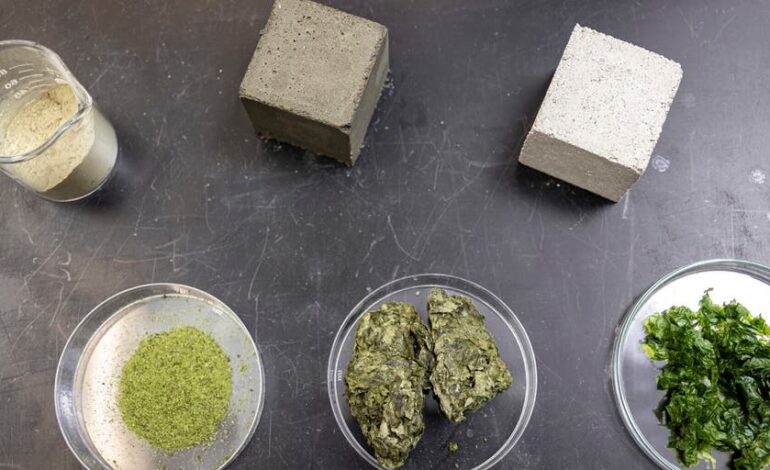
Innovative Seaweed Solution: Reducing Concrete’s Carbon Footprint
Discover how innovative research is transforming the construction industry by using seaweed to significantly reduce concrete’s carbon footprint. In this article, we explore the groundbreaking study, its implications, and the potential for sustainable development in the ever-growing field of construction.
Understanding Concrete’s Carbon Impact
Concrete is one of the most widely used building materials globally, yet its production processes are heavily carbon-intensive. The key culprit is cement, a core component that releases significant amounts of CO2 during its manufacturing. Exploring alternative methods to mitigate its environmental impact is crucial for sustainable construction.
The Role of Seaweed in Construction
Seaweed, an abundant and renewable marine resource, has recently been studied for its potential to revolutionize building materials. Researchers have found that incorporating seaweed into concrete can lessen its carbon footprint. The fibrous nature of seaweed allows it to serve as a reinforcement agent, which can help reduce the overall reliance on traditional cement.
Benefits and Challenges of Seaweed-Enhanced Concrete
Using seaweed-enhanced concrete offers numerous benefits, including improved sustainability and potentially lower production costs. However, challenges such as optimizing the mix for structural integrity and scaling the production of seaweed-derived materials need to be addressed. Ongoing research aims to tackle these hurdles and maximize the potential of this innovative solution.
Implications for Future Construction
As more building projects seek to reduce their environmental impact, seaweed-enhanced concrete presents a promising alternative. Implementing these solutions broadly could significantly lower carbon emissions from the construction industry. This shift could pave the way for greener buildings, contributing to global efforts to combat climate change.
Conclusion
Seaweed presents a promising solution to reduce concrete’s carbon footprint, offering a sustainable alternative for the construction industry. By embracing this innovation, future building projects can achieve greener practices, contributing to a lower environmental impact. Continued research and development are essential to fully realize the potential of seaweed-enhanced concrete on a global scale.






